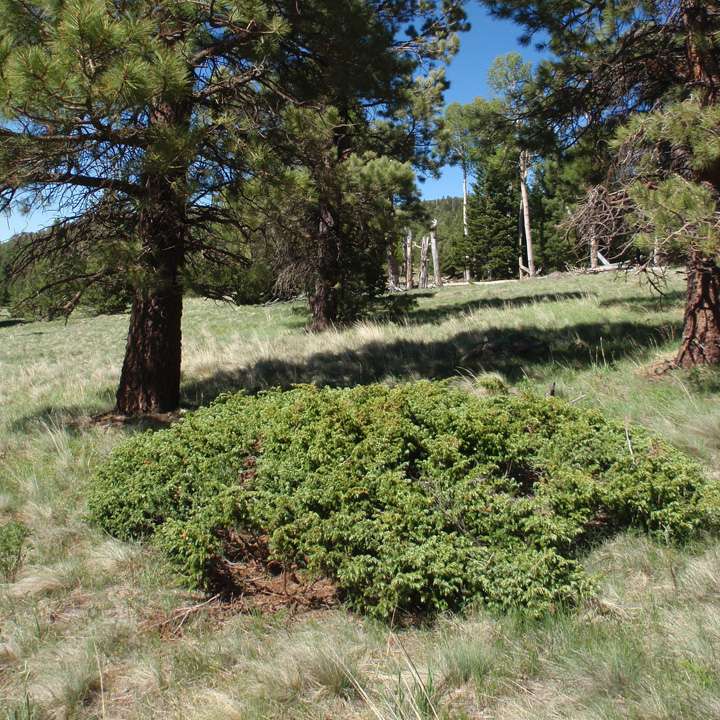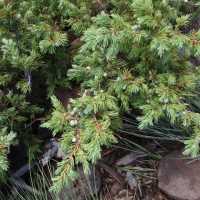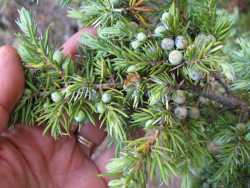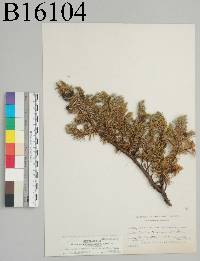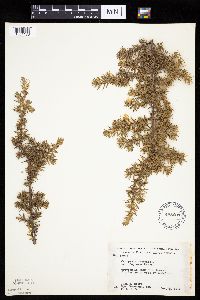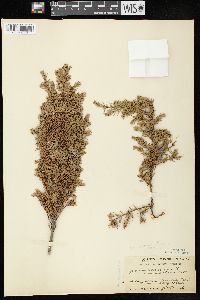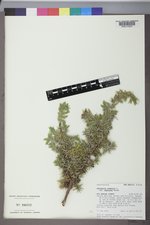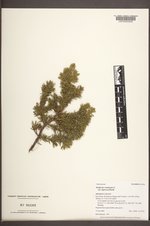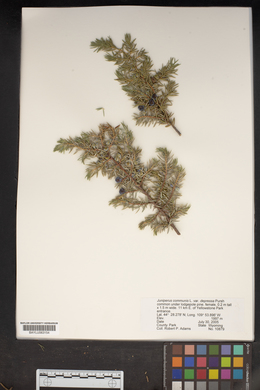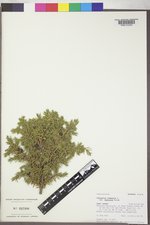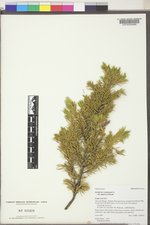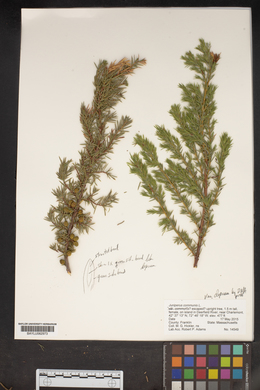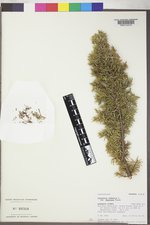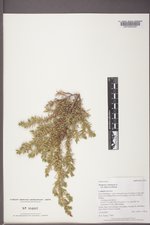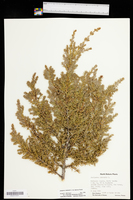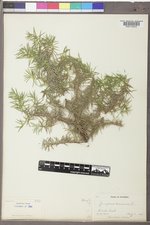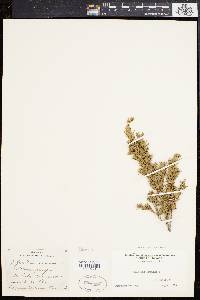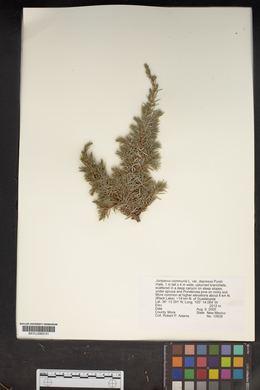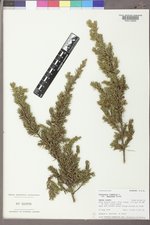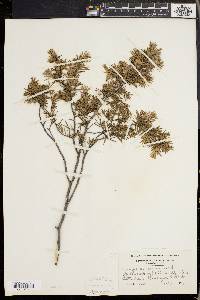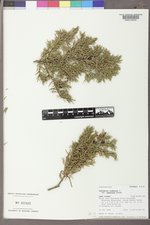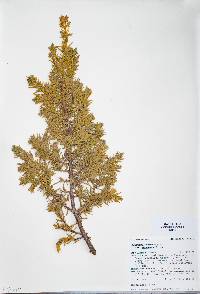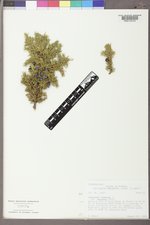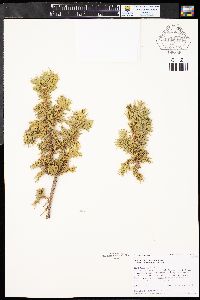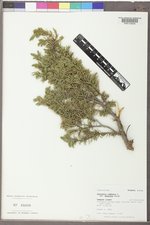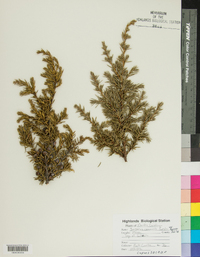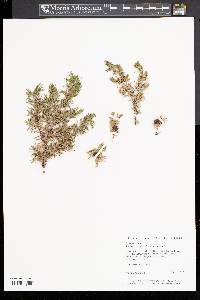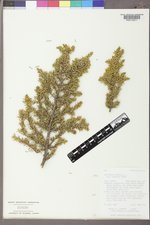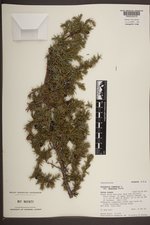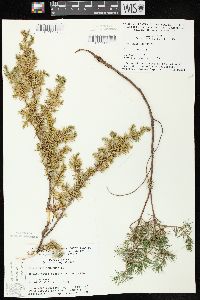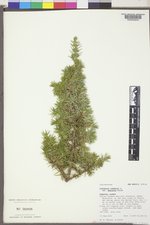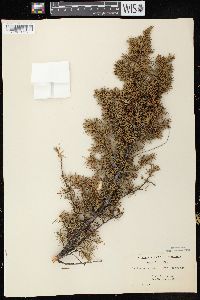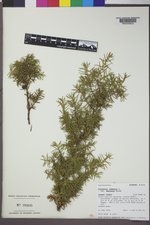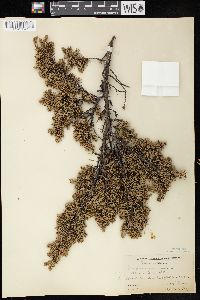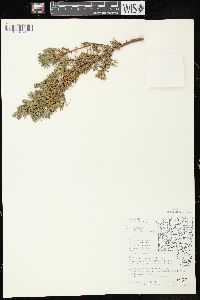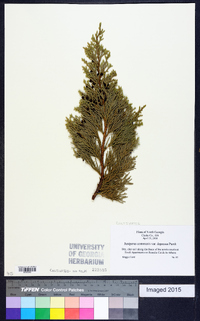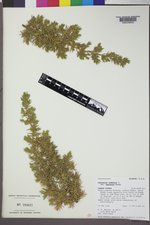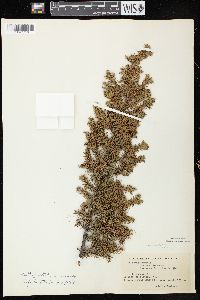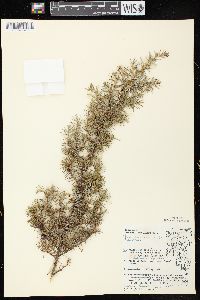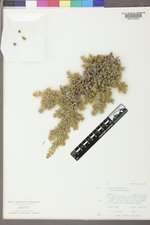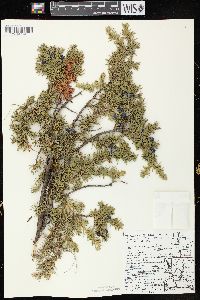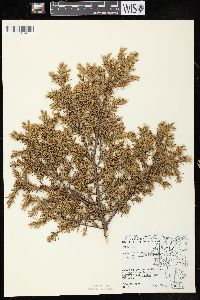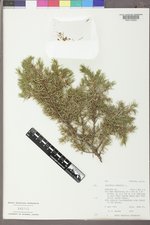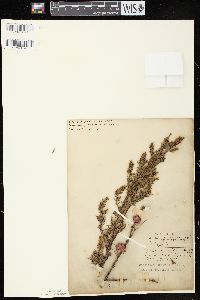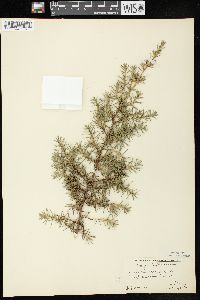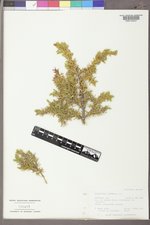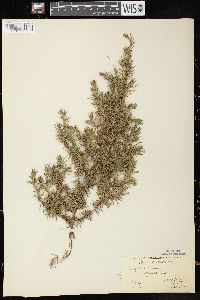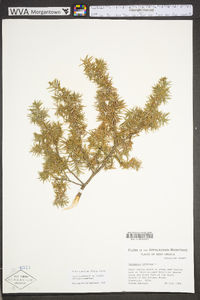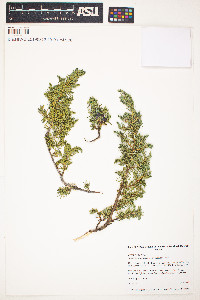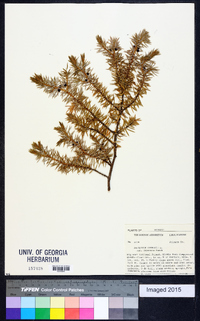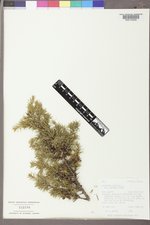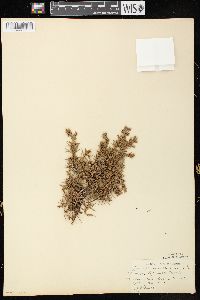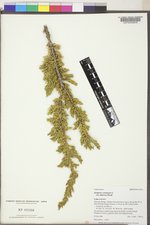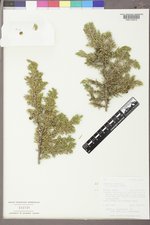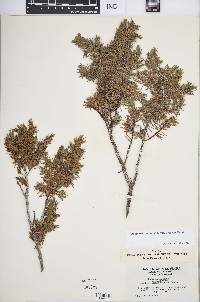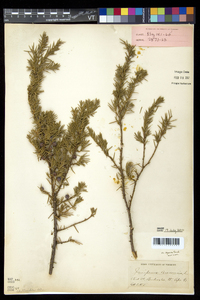Juniperus communis var. depressa
|
Juniperus communis var. depressa Pursh
 (redirected from: Juniperus communis subsp. depressa (Pursh) Franco) (redirected from: Juniperus communis subsp. depressa (Pursh) Franco) |
|
|
Family: Cupressaceae
Common Juniper
[Juniperus canadensis Lodd. ex Burgsd., moreJuniperus communis subsp. depressa (Pursh) Franco, Juniperus communis var. canadensis (Lodd. ex Burgsd.) Loudon, Juniperus depressa (Pursh) Raf.] |
Shrubs prostrate or low with ascending branchlet tips (occasionally spreading shrubs to 3 m, rarely small trees to 10 m). Leaves upturned, to 15 ´ 1.6 mm, rarely spreading, linear, glaucous stomatal band about as wide as each green marginal band, apex acute and mucronate to acuminate. Seed cones 6--9 mm, shorter than leaves. 2 n = 22. Rocky soil, slopes, and summits; 0--2800 m; Alta., B.C., Man., N.B., Nfld., N.W.T., N.S., Ont., P.E.I., Que., Sask., Yukon; Alaska, Ariz., Calif., Colo., Conn., Ga., Idaho, Ill., Ind., Maine, Mass., Mich., Minn., Mont., Nev., N.H., N.Mex., N.Y., N.C., N.Dak., Ohio, Oreg., Pa., R.I., S.C., S.Dak., Utah, Vt., Va., Wash., Wis., Wyo. In the flora, larger individuals of this variety (to 10 m) have been misidentified as var. communis .
PLANT: prostrate. LEAVES: to 1.6 mm wide, the glaucous band on upper surface about as wide as both green marginal bands. NOTES: See also parent taxon. Rocky or wooded slopes; boreal forest and woodland: Apache, Coconino, Gila, Greenlee, and Navajo cos.; 2100-3650 m (6900-12000 ft); Apr-May; boreal regions of U.S.; Canada. REFERENCES: Bartel, Jim A. 1994. Cupressaceae. J. Ariz. - Nev. Acad. Sci. Volume 27, 195-200. Shrub 0.5 - 2 m tall Leaves: in whorls of three, needle-like, often with a white line above, shiny dark green beneath, 1 - 1.8 cm long, tip sharply pointed, almost perpendicular to the stem, holding for 3 years. Leaves turn yellow to brownish green in winter. Bark: dark reddish brown, peeling in long, loose scales. Twigs: shiny greenish yellow, becoming reddish brown. Form: trailing along the ground with erect tips (decumbent) to form circular patches; a dwarfed form of <i>J. communis</i>. Cones: unisexual, with separate pollen and seed cones produced on different plants (dioecious). Pollen cones: 4 - 5 mm long, widest at base. Seed cones: almost spherical with three to four scales; scales fusing to become berry-like, blue to almost black with a waxy whitish coating (glaucous), 6 - 13 mm in diameter, nearly spherical, each containing one to three egg-shaped seeds; seeds 2 - 3 mm long, typically three-angled, take three years to mature. Pollination occurs from late April to early June. Similar species: The typical variety of Juniperus communis has a conical to open growth habit. Habitat and ecology: Old foredunes and clayey slopes near Lake Michigan, sand dunes farther from the lake, and in areas with dry, rocky soil. Occurence in the Chicago region: native Notes: Juniperus communis var. depressa is the most common form of J. communis in the Chicago Region. Etymology: Juniperus is the Latin name for juniper. Communis comes from the Latin word for common. Depressa comes from the Latin word for low, referring to its growth habit. Author: The Morton Arboretum From Flora of Indiana (1940) by Charles C. Deam This species has an erratic distribution and grows in widely different habitats. It is frequent in the dunes near Lake Michigan where a single plant will form a large clump. I found specimens in Steuben County in a decadent tamarack bog, one of which had a spread of about 25 feet. The branches were in a whorl and the plant was circular in shape with the tips of the decumbent branches usually 4-7 feet high. In Elkhart County I found a specimen in hard, clay soil 3 miles northwest of Goshen. This specimen maintained an erect branch with a very strong taper. It had just been cut and the upright branch was made into a small fence post. At the base where the tree was cut off it was a foot in diameter and it had many radiating branches that were several inches in diameter. I saw this variety growing in both Jefferson and Wayne Counties in shallow soil on rocky slopes. In 1923 I transplanted a seedling about 6 inches high from the dunes into a black loam soil and it grew erect until it reached a height of about 3 feet when the leader began to become decumbent and three branches at the surface began to elongate. After 12 years all the branches, numbering about 50, are decumbent and radiate in all directions, forming a circular clump 15 feet across, the branches being 4-6 feet high. This variety also occurs in Montgomery County. …… Indiana Coefficient of Conservatism: C = 10 Wetland Indicator Status: UPL |
